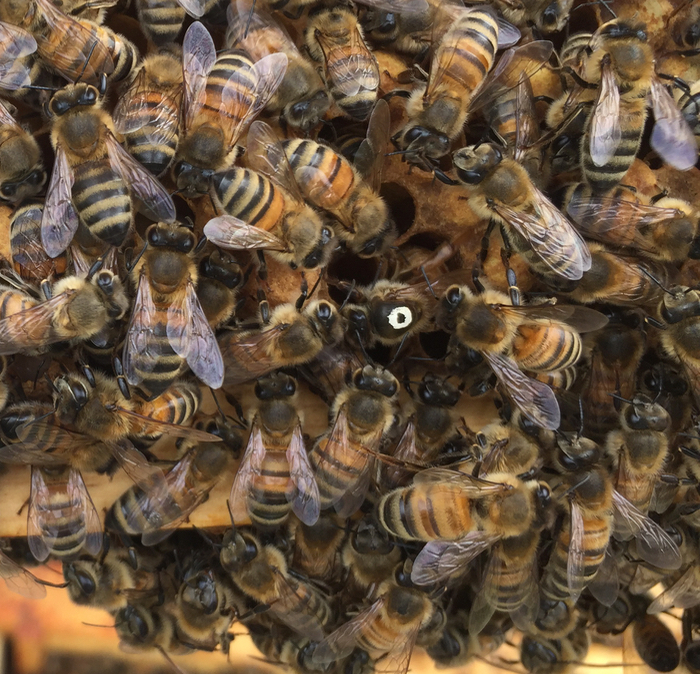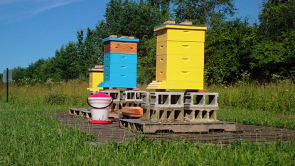It’s been an awful long time since I’ve written here; been building a house near our bee yard, mostly on our own (literally); it’s an ICF house (Nudura is the product and Holdfast is our local distributor and technical support…. cool stuff…. good people!)….
Every spare moment it seems is spent on the build… and we are waaaaaaayyy behind where we would like to be, but that’s part of the journey right? (“How hard can it be?”)….

But, we went into winter with 8 hives, and have come out of winter with 8 hives; all are thriving, and the nectar flow is happening (has been for the last 2 weeks at least).
We were inspecting this past weekend, doing general checks, looking for queen cells, signs of laying, queen, volume in the supers, etc. Swarm signs are very low at this point (but we are watching); nectar flow is good; all hives have good queen laying patterns, and all looks well
But, one of our best hives (our blue styro-foam hive) had 3 of these:

Supercedure cells; hmmm…. she was a good queen too; maybe 2 years old?
Based on the capped brood and other signs of recent laying, she’s still active and doing some laying, but the other girls know that she’s on her way out….
We left 2 of the cells totally alone, and put them back into the hive; we took this one, and made a split into a small Nuc…. hybrid split… food, brood, THIS frame, shaked a bunch of bees, etc……making the small Nuc on the right of the picture below….

Now we have 9, and now we wait….










